Calendars - The Way We Keep Time
Photos by Forrest Anderson
The worst calendar malfunction most of us will experience in the new year will be accidentally writing down 2019 on a document in January 2020 or forgetting to put an upcoming event on our calendar. The calendar is a taken-for-granted framework for our lives that we give little thought to.
However, underneath our calendar’s hood is a complex mesh of accumulated history and customs, moving astronomical parts, design and technology, made more daunting by globalization.
We organize our days for business, administrative, social, religious and personal purposes by the timekeeping system we call a calendar. We use calendars to agree when future events will occur and to record those that have already happened for civil, social, religious or agricultural reference. Calendars help us know when holidays are, when to start agricultural and other seasonal activities, mark the beginning and end of business accounting periods, and meet legal deadlines such as when taxes are due and when a contract begins and ends. They provide other useful information such as seasons.
They help us manage our busy personal schedules, work, school, medical appointments and family commitments. Many people use several calendars at a time for different segments of their lives.
We have meshed calendars, to-do lists, agendas and planners together to schedule our lives, sometimes down to the minute. We carry calendars around in our phones and use them multiple times daily. We share them with each other.
It's hard for us to grasp that our calendar developed over thousands of years in tandem with the various civilizations that our current one emerged from, that days once didn’t have dates and that this year's calendar once couldn’t be replaced with a new one.
We forget that underlying our calendar system is its connection with the movements of the sun and earth, which keeps our days and months consistent with the seasons from year to year. The movements of either the sun or moon or both are the most apparent regularly recurring events that can be used for timekeeping, so it is natural that from ancient times, calendars have been based on them.
Lunar calendars were common in the ancient world. They are based on the lunar cycles, so a new month starts with every new moon. One widely used lunar calendar was based on a 19-year period during which seven years had 13 months and the other years had 12 months. The months each had 29 1/2 days. This made 6,932.5 days over 19 years. Nineteen solar years actually had 6,939.7 days, so there was a five-week difference between the lunar calendar and a solar one every century.

Lunar calendars follow the phases of the moon, with a month starting at the new moon.
Solar calendars are based on seasonal changes synchronized to the sun’s motion. In a solar calendar, a year approximates the time it takes for a complete cycle of seasons. The Persian calendar was an ancient example. Solar calendars assign a date to each day. A day can be a period between sunrise and sunset with a following period of night, or a period between two events such as two sunsets. The length of the interval between the events can vary during the year or be averaged. Because the number of days in a solar year is not a whole number, a solar calendar must have a different number of days in different years. This can be done by adding an extra day during leap years.

The sun and the Forbidden City, Beijing, China. China's emperors took calenders seriously, as they were part of their work of controlling time keeping. Imperial astronomers and other experts kept track of the calendar and made sure that imperial sacrifices and festivals occurred at the proper time of year.
Lunisolar calendars are a combination of solar and lunar. They compensate for the difference between lunar and solar years by adding an extra month to align the months with the seasons. The traditional Chinese calendar, Hindu calendar and Hebrew calendar are examples. In a lunar calendar, the month approximates the cycle of the moon phase.
The first recorded calendars were Bronze Age Egyptian and Sumerian ones which developed along with the development of writing. The ancient Egyptian calendar had 12 months of 30 days each – 360 days per year. The Egyptians added five extra days yearly to bring the calendar more in line with the solar year. These five years became a festival and break from work.
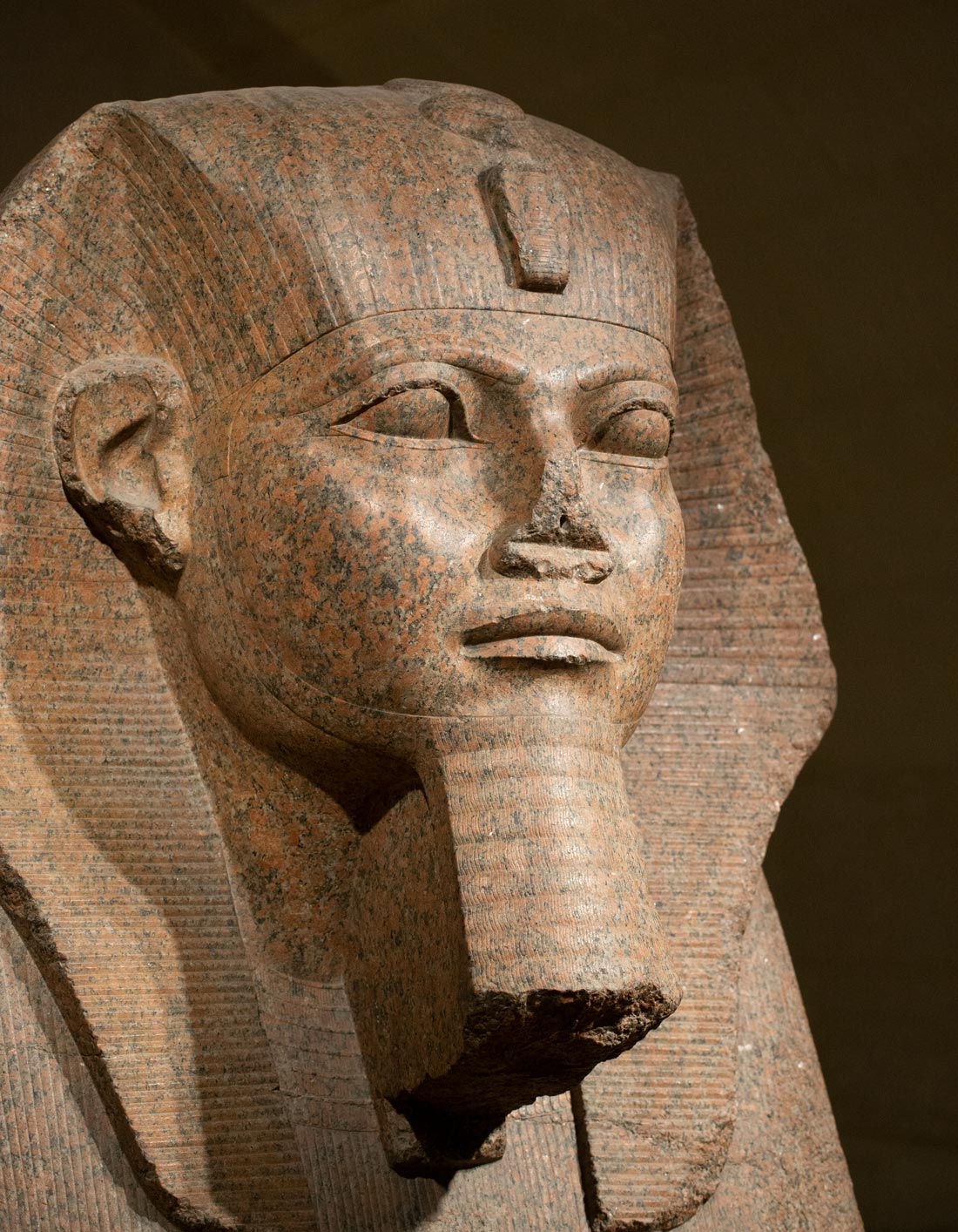
An Egyptian Sphinx, the Louvre, Paris, France. The Egyptian calendar was an important part of the country's religion. The five extra days in the calendar every year were the birthdays of five Egyptian gods.
Ancient Near East calendar systems based on the Babylonian calendar include the Persian Empire’s calendar system, from which the Hebrew calendar developed.
Calendars developed in Greece gave rise to the Roman calendar and some Hindu calendars that in turn influenced Buddhist calendars.

A carved rellief from the Parthenon of a festival that was held every four years in honor of the Greek goddess Athena.
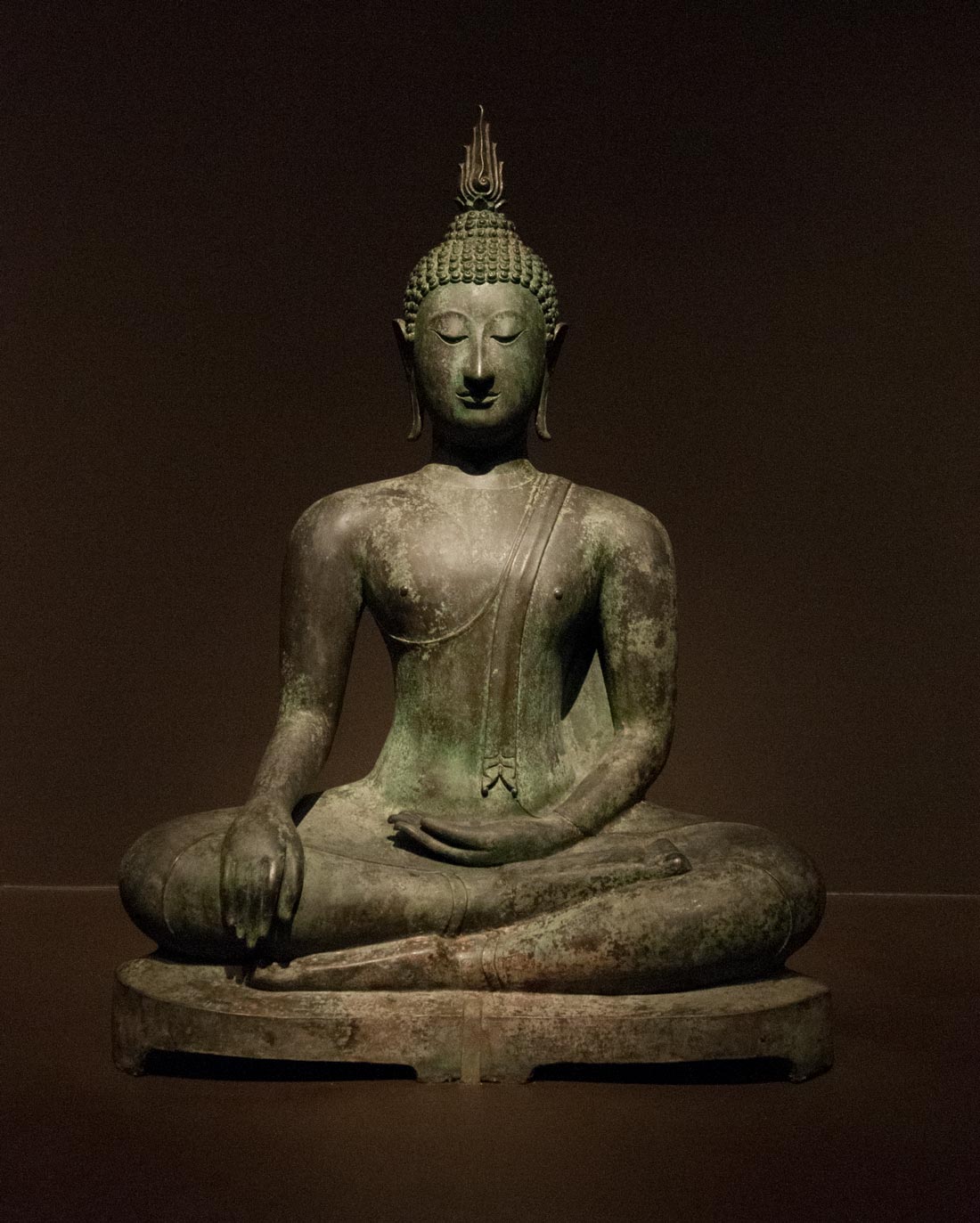
Buddhist statue, the Los Angeles Museum of Art. There was strong overlap between Hindu and Buddhist culture. The Buddhist calendar developed from an old Hindu one.
Before 770 BC, Chinese calendars were solar and had ten months and 36-day-long months, with 5-6 day transitions. Primitive lunisolar calendars were established in China from 475-220 BC. The months of these calendars began on the day with the new moon, with 12 or 13 months in a year.
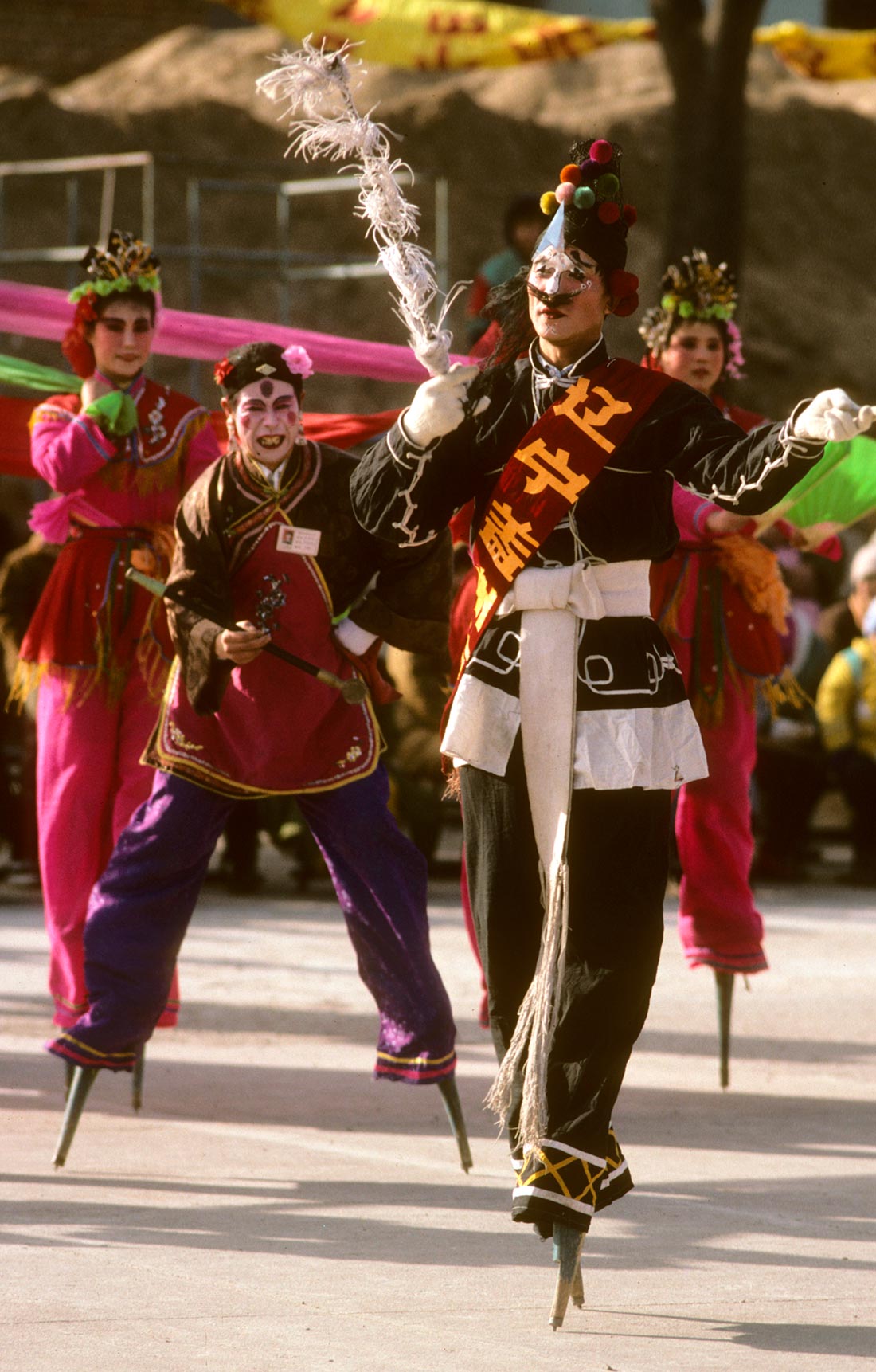
Stiltwalkers at Chinese New Year, Beijing, China. The Chinese New Year, known as Spring Festival in China, begins on the first day of the new moon between January 21 and February 20 every year.
The most complex of ancient calendar systems were the Maya and other Mesoamerican systems. The Mayan calendar had two years – the 260-day Sacred Round and the 365-day Vague Year. The Sacred Round determined important activities related to the gods and such activities as naming people, predicting the future and deciding auspicious dates for battles and marriages. The Vague Year was a solar calendar with 18 months of 20 days each and five unlucky days at the end. It was used primarily for seasons and agriculture.
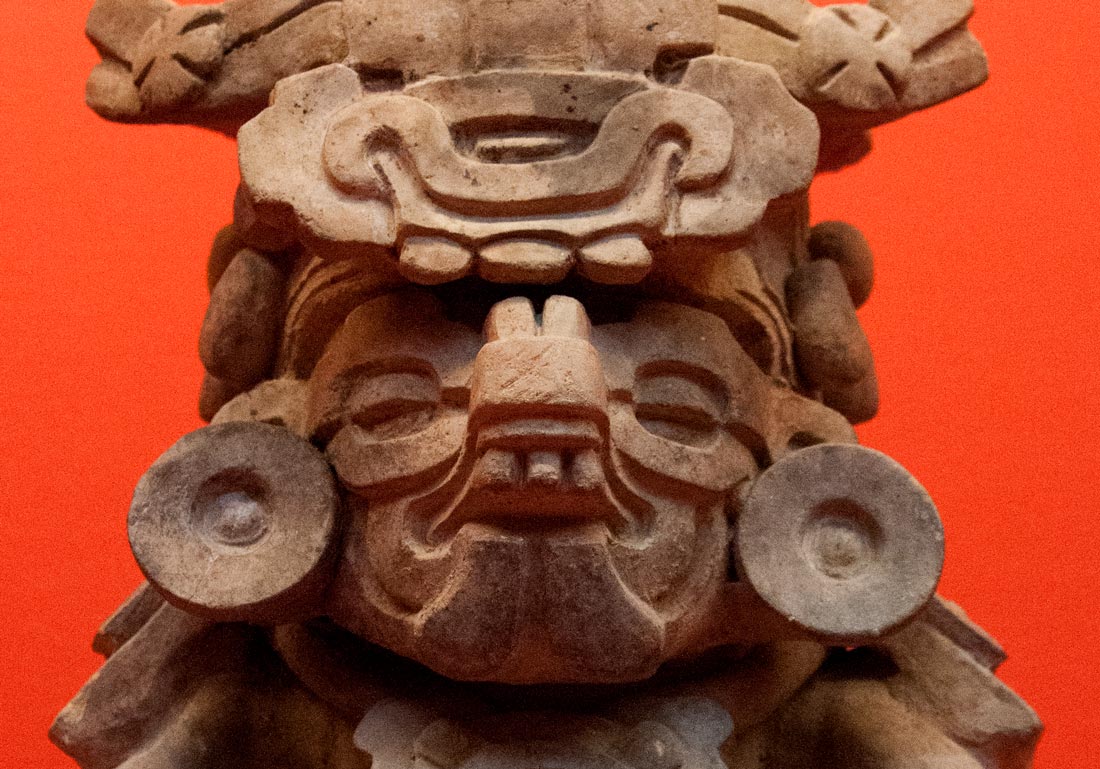
This rain deity governed the agricultural cycle of a number of peoples in pre-Columbian Mexico. Los Angeles County Museum of Art.
The Romans’ Julian Calendar
Because the Romans believed that even numbers were unlucky, their months were 29 or 31 days long with the exception of February’s 28 days. They had four months of 31 days, seven of 29 days and one of 28 days. This added up to 355 days. They invented an extra month, Mercedonius, of 22-23 days that was added every second year. Even so, the Roman calendar drifted off the seasons until Julius Caesar ordered a reform. He ordered that the year 46 B.C. would be 445 days long to bring the calendar back in line with the seasons. Then Rome changed to a solar-year calendar with 365 days and six hours as the calendar’s basis. The months were 30 or 31 days in length. Every fourth year was a 366-day year and the year began with January 1, not the vernal equinox in late March as it had before the reform. They had an eight-day week with the eight day being market day.
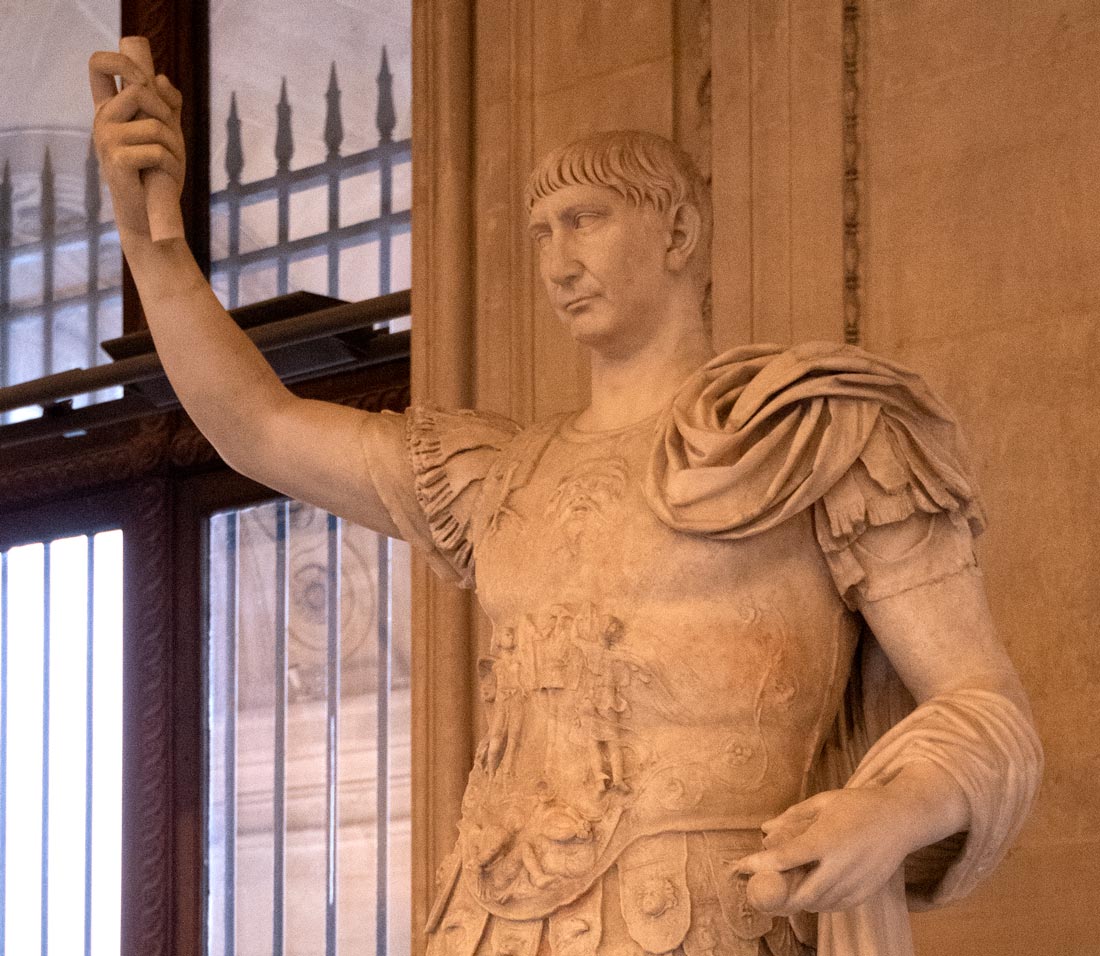
Statue of the Roman Emperor Trajan, the Louvre, Paris, France. The Roman emperors paid close attention to the calendar, a means by which they governed their empire. We inherited names of our months including January and March, from the names of Roman gods, and the names of our months July and August from the Roman emperors Julius Caesar and Augustus Caeser. Other months refer to Roman names for ordinal numbers.
The Julian calendar, still used by Eastern Orthodox churches to calculate the time of holidays, is 11.5 minutes longer than the actual solar year. By the 15th century, the Julian calendar had drifted behind the solar calendar by about a week. The vernal equinox was coming at around March 12 instead of March 20.
After Christianity spread, the oldest calendar of Christian saints was compiled in the mid-4th century. It included both pagan and Christian festivals.
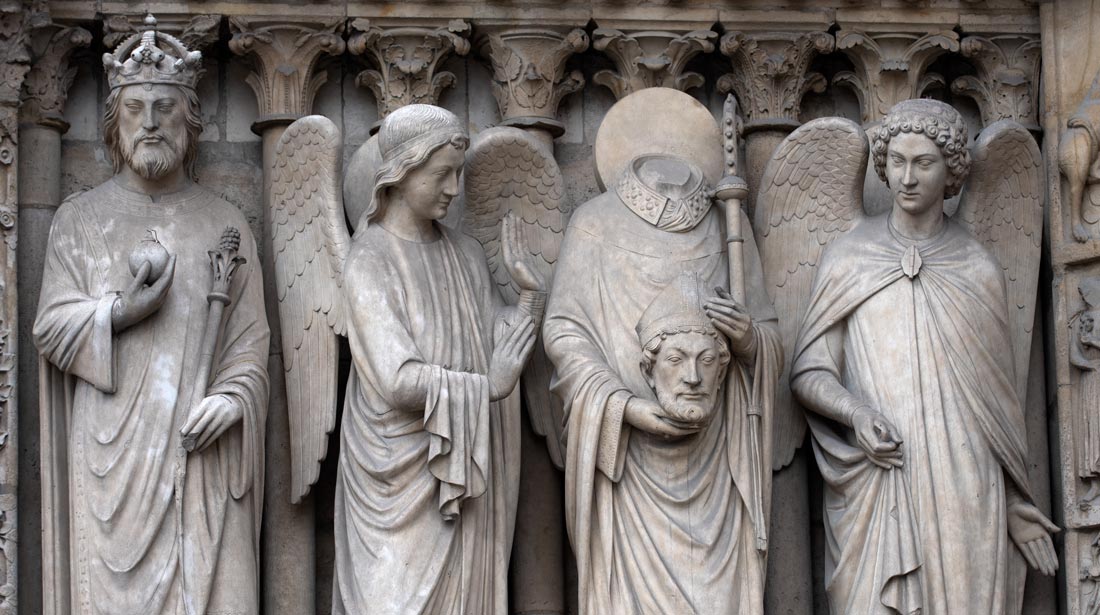
The calendar of saints arose from an early Christian custom of commemorating each Christian martyr annually on the day of their death. Eventually, every day of the year had a saint who was commemorated on that date. This practice of each day having the name of a saint eventually became the precursor to the practice of naming hurricanes and tropical storms, as such storms took on the names of the saint's day on which they made landfall in Puerto Rico. Some of the saint's days became major festivals in the Christian calendar and were celebrated with festivals and feasts. Saints were carved with the emblems of their martyrdom on cathedrals such as Notre Dame in Paris, above.
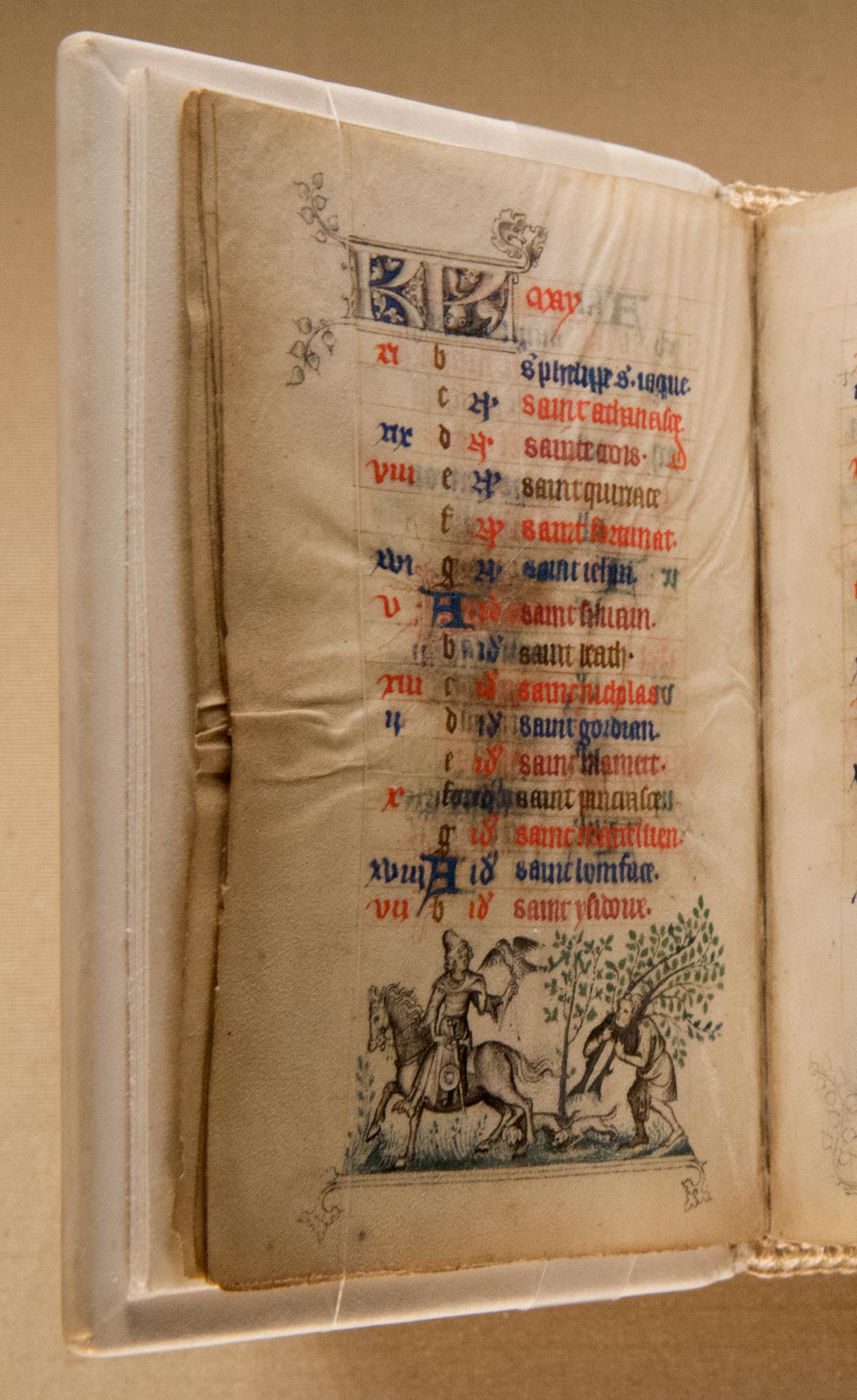
This page for the month of May from a 14th century Book of Hours shows a spring hunt. Metropolitan Museum of Art.
It was common for ancient cultures to number the calendar based on the reign of rulers. The Chinese did this up until the last Chinese emperor in 1912, and the Japanese still do so for official business. As a result, people working with the traditional calendars in these countries need to acquire a good knowledge of the rulers’ history. The Roman Republican calendar numbered years based on the sitting consuls. Because there were two consuls at any one time and they could hold the appointment more than once, it can be challenging to figure out the equivalent in the Gregorian calendar.
The practice of dating from the traditional year of the birth of Christ was introduced in the 6th century. This system has no 0 year, so the year AD 1 immediately follows the year 1 BC. Rival calendar eras remained in use in Europe, however, and the Anno Domini system didn’t become widely used until the 11th-14th centuries.
Both Christians and Jews were more focused on what they considered the prime historical date – The Year of Creation of Annus Mundi. The Eastern Orthodox Church considered this date to be 5509 BC, the Coptic Church 5500 BC and the Church of England used the date of 4004 BC.
The Gregorian Calendar
In 1545, the Council of Trent authorized Pope Paul III to reform the Julian calendar. Pope Gregory XIII ordered that Thursday, Oct. 4, 1582, be the last day of the Julian calendar. The next day would be Friday, Oct. 15. To keep the calendar aligned with the solar year, a formula suggested by Vatican librarian Aloysius Giglio was adopted - every fourth year was a leap year unless it was a century year such as 1700 that was not divisible by 400. Each Gregorian year has either 365 or 366 days, the leap day being Feb. 29. This rule eliminated three leap years in four centuries, making the calendar close to accurate. In spite of this rule, an average calendar year is still about 26 seconds longer than the Earth's orbit period, but this isn’t considered important because it would take 3,323 years to make a discrepancy of a single day.
Most Catholic countries changed to the pope's new Gregorian calendar in 1582, but Protestant ones continued with the Julian calendar until 1700. Great Britain and its colonies didn’t adopt the Gregorian calendar until 1752. Japan adopted it in 1873, Russia in 1918, Greece in 1923, Turkey in 1926 and China in 1949. The Gregorian calendar now is the international standard and is used almost everywhere for civil purposes.
The word calendar itself originated from the Latin term “calendarium,” which meant account book or register. Accounts were settled and debts were collected on the calendae, or first day of the month which referred to the “calling” of the new moon when it was first seen in the lunar cycle. The word became calendier in Old French and calender in 13th century Middle English. The spelling “calendar” became common in modern times.
There have been a number of modern proposals for calendar reform, but they have failed to take off because they would be disruptive and some religions object to them.
Despite global adoption of the Gregorian calendar, different countries use different baselines for their calendars’ starting years. Traditionally, China and Japan used calendars based on the reigns of their rulers and Japan still does this for official purposes.
A number of alternative religious and cultural calendars are used for keeping track of the liturgical year and observing religious and cultural feast days. Among them are:
- The Islamic calendar, a lunar calendar used to date Islamic holy days and festivals. It is based on on-going astronomical observation. With 12 lunar months of 354 or 355 days and an annual drift of 11-12 days, its relation to the seasons repeats about every 33 Islamic years. A lunar calendar was used by the Arabs, but Muhammad forbade shifting between 12 and 13 months to keep in line with the solar year. As a result, months of the Islamic calendar and Islamic religious festivals move through different seasons of the solar year.
- The Hebrew calendar is based on a strict set of arithmetic rules. Even with these rules, the accuracy of such a calendar diminishes slowly over time because of changes in the earth’s rotation. This limits such a calendar’s lifetime to a few thousand years unless the rules are modified. This calendar is used by Jews for religious and cultural events and national holidays in Israel as well as for some business dealings.
- Hindu calendars – There are various lunisolar ones used in the Indian subcontinent. They insert an extra month every few years to make sure festivals and crop related rituals are in the appropriate season. They are in use today.
- The Buddhist calendar and traditional lunisolar calendars are used in some Asian countries. These are based on an older version of the Hindu calendar.
- The Persian calendar is used in Iran and some parts of Afghanistan.
- The Ethiopian calendar is used in Ethiopia and Eritrea.
- The Somali calendar is used in Somalia along with the Gregorian and Islamic calendars.
- The Thai solar calendar uses the western months and days, but bases the years on the traditional Buddhist calendar.
- Fiscal calendars track the accounting year of a government or business and are used for budgeting, keeping accounts and taxation. They can start at any date. The US government's fiscal year starts on October 1 and ends on September 30. India's fiscal year starts on April 1 and ends on March 31.
- A fiscal calendar fixes each month at a specific number of weeks to facilitate comparisons from month to month and year to year. This calendar normally adds a 53rd week to every 5th or 6th year. The ISO week is an international standard way to do this.
- Various modern calendars are used on a limited basis. The Indian national calender is used alongside the Gregorian calender in news broadcasts and Indian government communications. The North Korean government uses the Juche calendar, which begis with the birth of the founder of North Korea, Kim Il-Sung. Taiwan uses a Chinese calendar for official purposes that was used on the Chinese mainland until the Communists took over in 1949. The first year of numbering was 1912, when China’s last emperor abdicated. Months and days are numbered according to the Gregorian calendar.
Calendar Design
Despite the growth of phone calendar use over the past 20 years, paper calendars have survived and thrived. Their sales have increased to hundreds of millions of dollars per year, and sales of decorative calendars have grown. Paper calendars and planners appeal to some people because they can customize them with colors and stickers, they provide overall visibility that phones don’t, and they don’t have annoying notifications, alerts and messages. Some people also dislike having to launch their phone and app to check their calendar. The popularity of desk pads and wall calendars has gone down somewhat, but an estimated 75 percent of American households still have a physical calendar in their kitchen.

2020 decorative calendars in a store.
Despite widespread use of the Gregorian calendar, there is substantial discrepancy in the way in which calendars are designed. They can show a single day, week, month or year. In the United States, Sunday is the first day of the week on a calendar, but in Britain and some other countries, Monday can be shown as the first day of the week. There also are differences in various countries over what the weekend is. In some Muslim countries, the weekend is Friday and Saturday or Thursday and Friday.
The seven-column calendar grid showing a month’s events has become embedded in our minds as the standard. It is one of the world’s most common infographics – providing instant visibility based on the seven-day cycle. This visual representation of the months and weeks dates from the 16th-17th centuries. Before that, months and weeks were represented using circular diagrams to represent the cycles. This was because calendars were seen as showing repeating cycles rather than as planners that would chart the way ahead. They were not year-specific or disposable.
In the 1600s, they began to be printed as a form of almanac with a grid showing the weeks inside a circle. America’s first daily planner was published by Robert Aitken in 1773 so that for the first time, people could see their days laid out like a modern agenda and plan their to-do lists in it.
Disposable calendars became available in the Industrial Revolution when printing became cheap and available to most people. Calendars also developed into a decorative item and advertising medium.
Electronic Calendars
The advantage of electronic calendaring is that it can be synced to various devices and can integrate with contact lists, to do lists and agendas. It is a powerful business and personal tool. However, it creates some complex programming challenges for digital programmers who have to develop for a global audience.
iOS programmer Dave DeLong notes some of the challenges associated with calendar programming on his website, https://yourcalendricalfallacyis.com.
Among them are Daylight Saving Time, which creates some 23 and some 25 hour days and results in some hours occurring twice in a single day. Leap years, days and months are another one.
Variations in time zones and the occasional creation of new ones, as well as the typical 50-hour length of a single calendar day because of time zone offsets pose another challenge.
Let’s don’t even get into space travel, where days are longer or shorter and time can flow faster or slower.
The iPhone calendar gives users a few choices as to what kind of calendar they want to use in conjunction with the Gregorian calendar and some parameters they can set such as whether to override time zones. A number of other popular calendar apps just stick to the Gregorian calendar while some apps work primarily for specialty calendars.
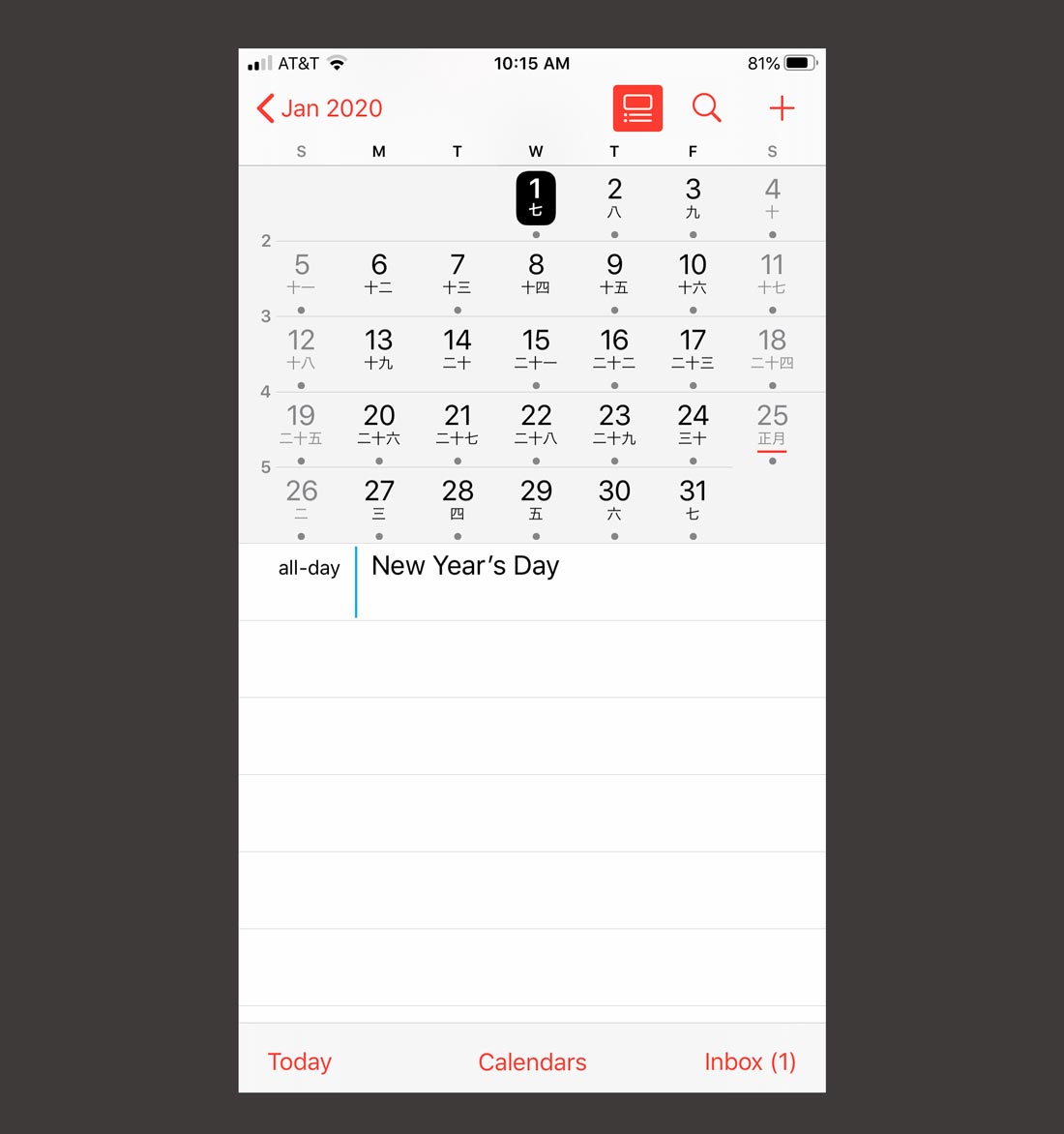
The iPhone calendar has an option that includes the traditional Chinese calendar combined with the Gregorian calendar.
Related photos:
Check out these related items

Journal Strokes for Different Folks
Journaling is an eye- and heart-opening strategy that helps people sort out their lives and feelings and work out their problems.

The Magical World of Apps
Because mobile apps are so pervasive, we forget how amazing they are. We look at the process by which an app gets to the App Store.
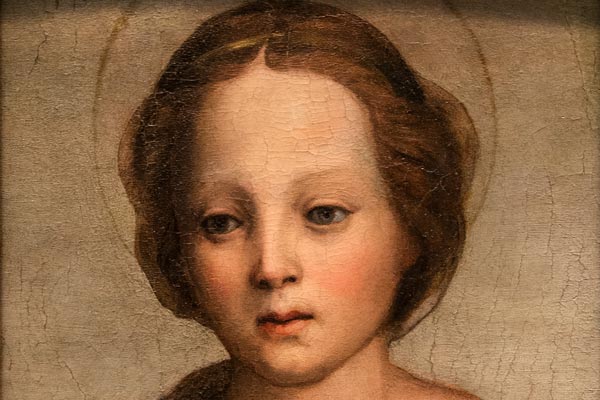
Portraits of Mary
Mary, the mother of Christ, may be the most prominent visual icon in the world. We explore her history.
